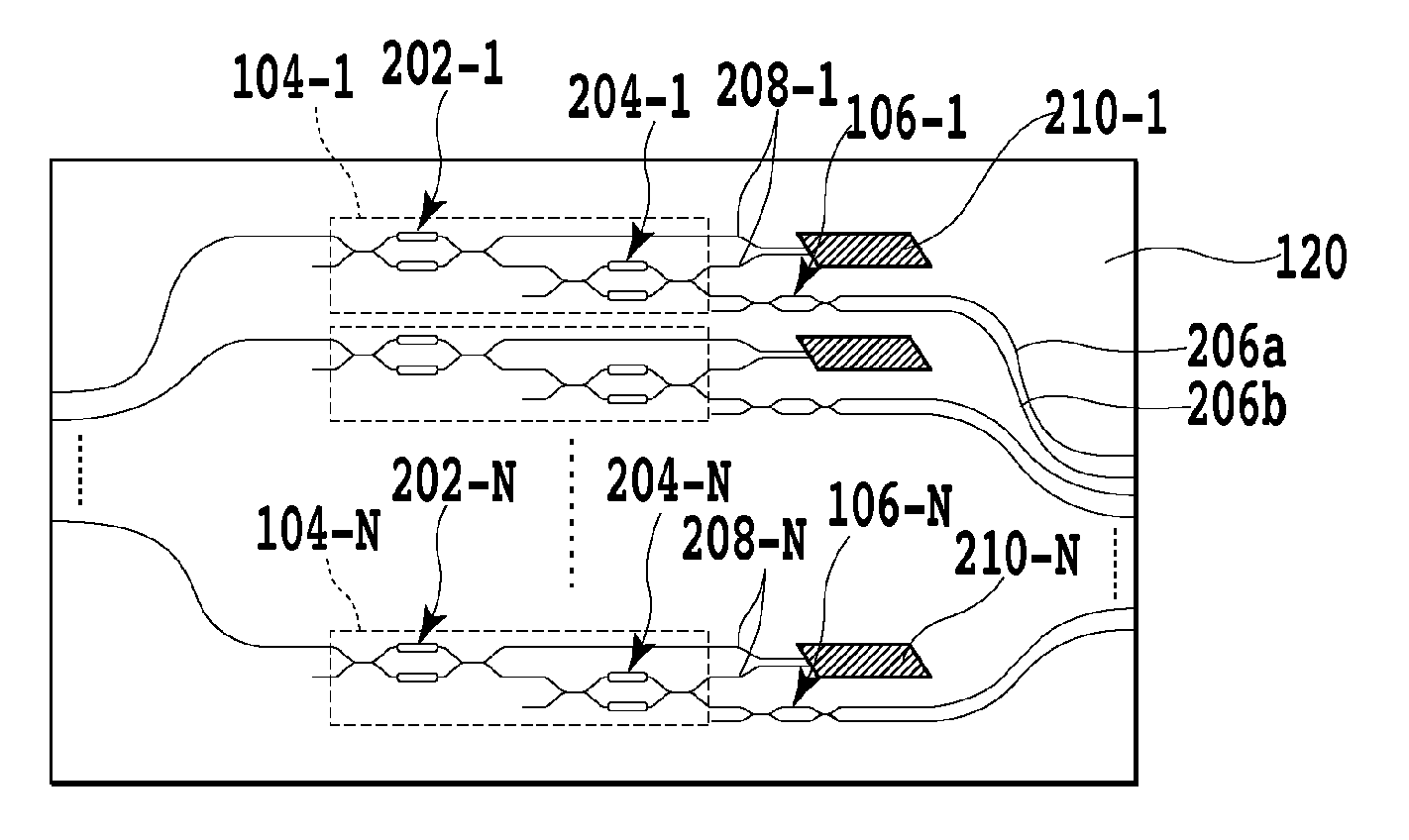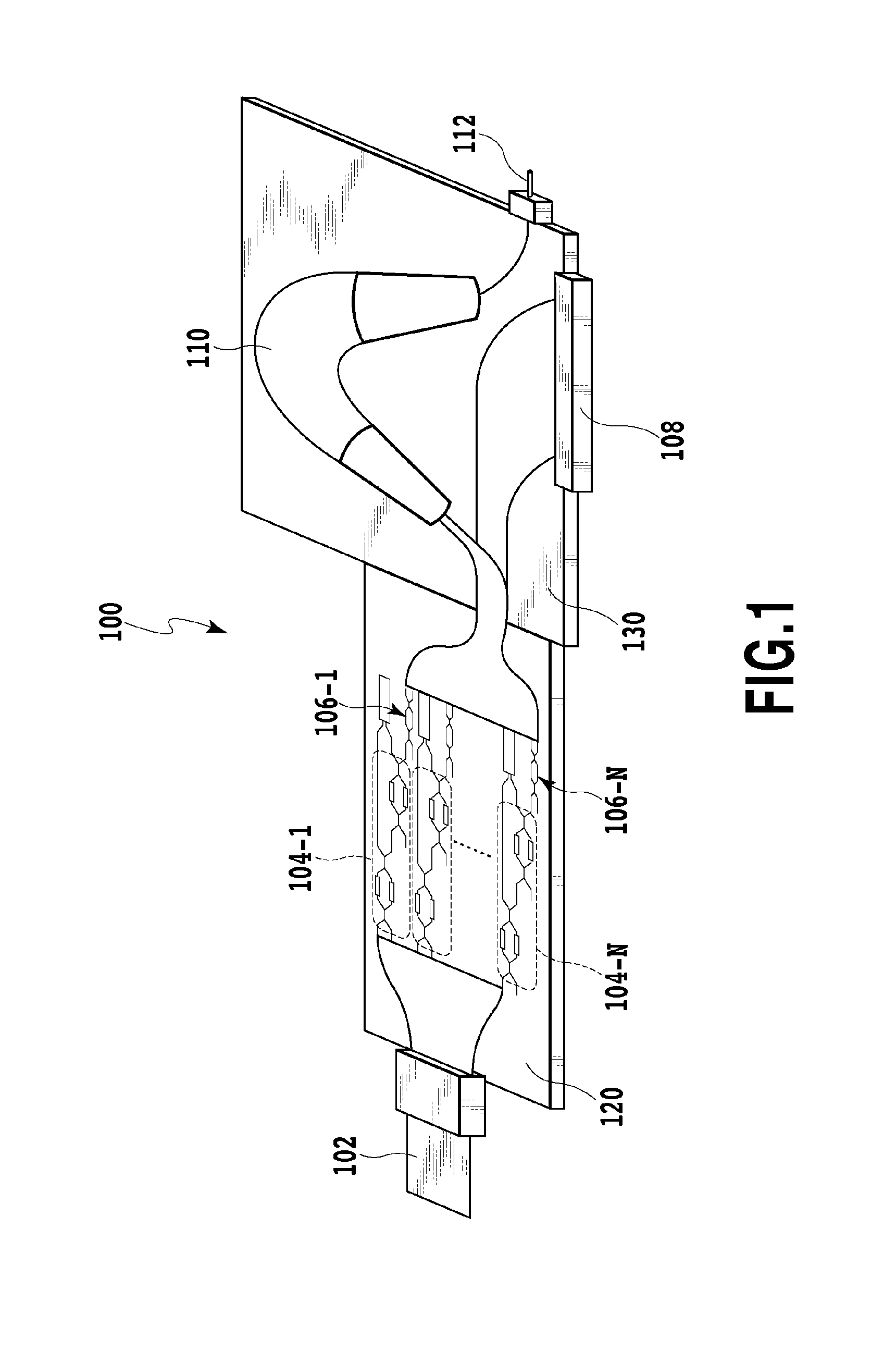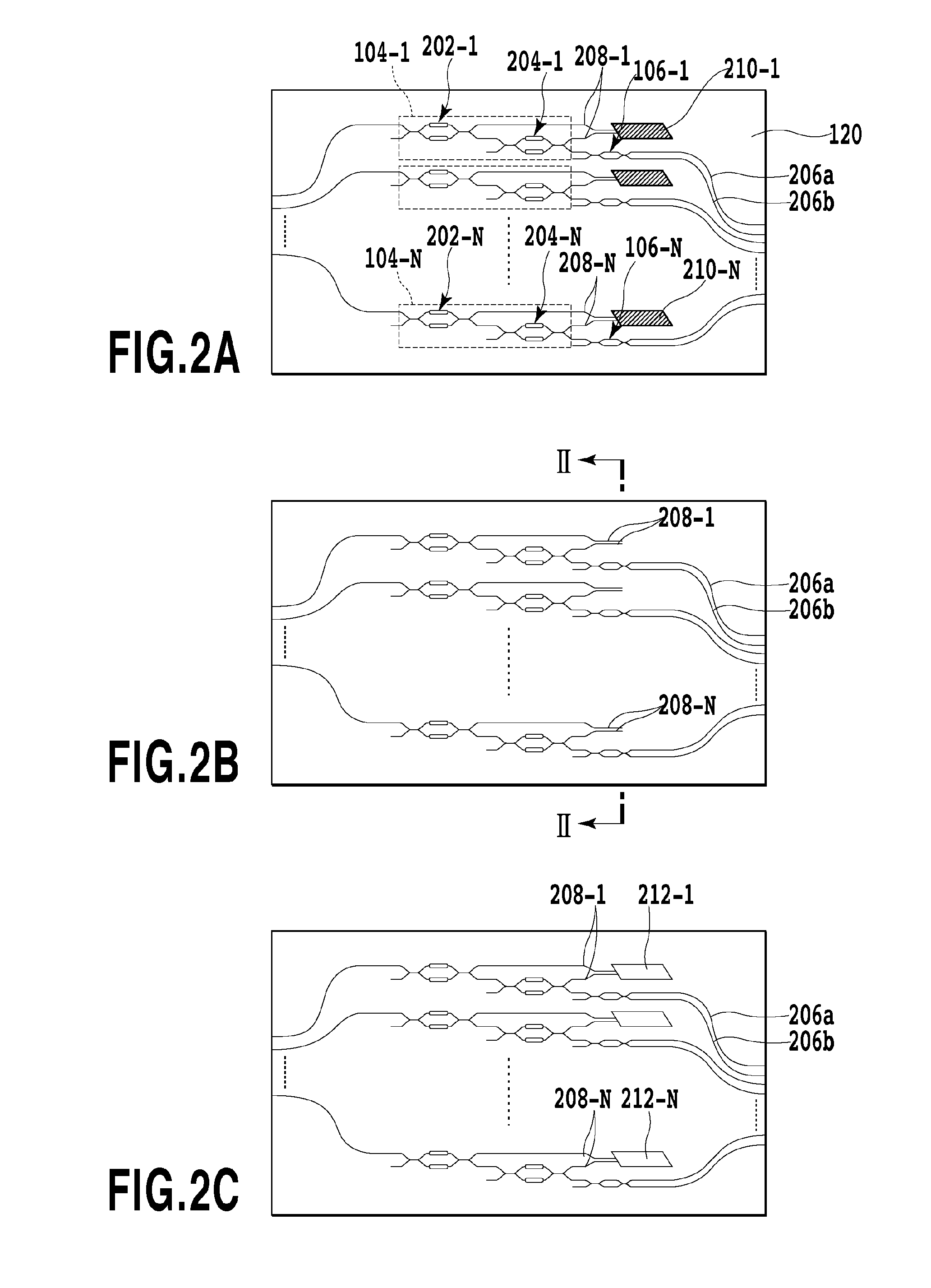Optical waveguide device and module
a waveguide and optical waveguide technology, applied in the field of optical waveguide devices and modules, can solve the problems of increasing the degree of integration, device size and power consumption, etc., and achieve the effects of suppressing crosstalk, suppressing crosstalk, and restrainting crosstalk
- Summary
- Abstract
- Description
- Claims
- Application Information
AI Technical Summary
Benefits of technology
Problems solved by technology
Method used
Image
Examples
example 1
[0059]FIG. 1 is a diagram showing a configuration of a waveguide device according to an example of the present invention. As shown in FIG. 1, a device 100 includes a substrate 120 with VOAs 104-1 to 104-N and a substrate 130 connected to the substrate 120 and is with an arrayed waveguide grating (AWG) 110. The device 100 is configured as a wavelength multiplexing device with an optical level adjustment function (VMUX: VOA equipped MUX). The device is introduced into, for example, a WDM system. In the present configuration example, the VOAs 104-1 to 104-N and tapping optical couplers 106-1 to 106-N are integrated together in one substrate. An optical power monitor PD 108 and the AWG 110 are integrated together in another substrate 130.
[0060]FIG. 2A is a detailed circuit layout of the substrate 120 with the VOAs 104-1 to 104-N according to the present example. In FIG. 1 and FIGS. 2A to 2C, for simplification of drawing, only thin film heaters that drive the VOAs 104-1 to 104-N are sho...
example 2
[0071]Example 2 of the present invention used a configuration similar to that shown in FIG. 1 and FIG. 2A and in which the light blocking material provided at the terminal of each of the dummy ports 208-1 to 208-N for the VOAs 104-1 to 104-N was a mixture of a silicone resin as a base material and powder metal microparticles that are also used as a pigment. The optical power of light which inputs the light blocking material is attenuated by optical scattering caused mainly by the metal microparticles. The sample prepared was formed of a silica optical waveguide fabricated on a silicon substrate as is the case with Example 1 and included the termination structures 210-1 to 210-N each with a groove and the light blocking material which was introduced in order to prevent light from coupling to the adjacent waveguide and causing crosstalk. Also in the present example, the adjacent channel crosstalk had a value of at most −60 dB.
[0072]Furthermore, the angle of the incidence plane on the ...
example 3
[0073]Example 3 of the present invention used a configuration similar to that in Example 2 and in which the angle of the incidence plane on the groove for the terminated waveguide (the angle θ in FIG. 3) was set equal to Brewster's angle. The other components and the light blocking material were similar to those in Example 2. The Brewster's angle in the present example was calculated to be about 50 degrees. By setting the angle of the incidence plane equal to the Brewster's angle, all the polarization components that are horizontal to the substrate are allowed to input into the light blocking material, and some of the polarization components that are vertical to the substrate are radiated into the waveguide substrate by reflection. Furthermore, equivalent effects are obtained with a near angle to the Brewster's angle or with an angle equal to or larger than the Brewster's angle. Thus, the adverse effect of crosstalk caused by radiated light is further reduced throughout the waveguid...
PUM
 Login to View More
Login to View More Abstract
Description
Claims
Application Information
 Login to View More
Login to View More - R&D
- Intellectual Property
- Life Sciences
- Materials
- Tech Scout
- Unparalleled Data Quality
- Higher Quality Content
- 60% Fewer Hallucinations
Browse by: Latest US Patents, China's latest patents, Technical Efficacy Thesaurus, Application Domain, Technology Topic, Popular Technical Reports.
© 2025 PatSnap. All rights reserved.Legal|Privacy policy|Modern Slavery Act Transparency Statement|Sitemap|About US| Contact US: help@patsnap.com



